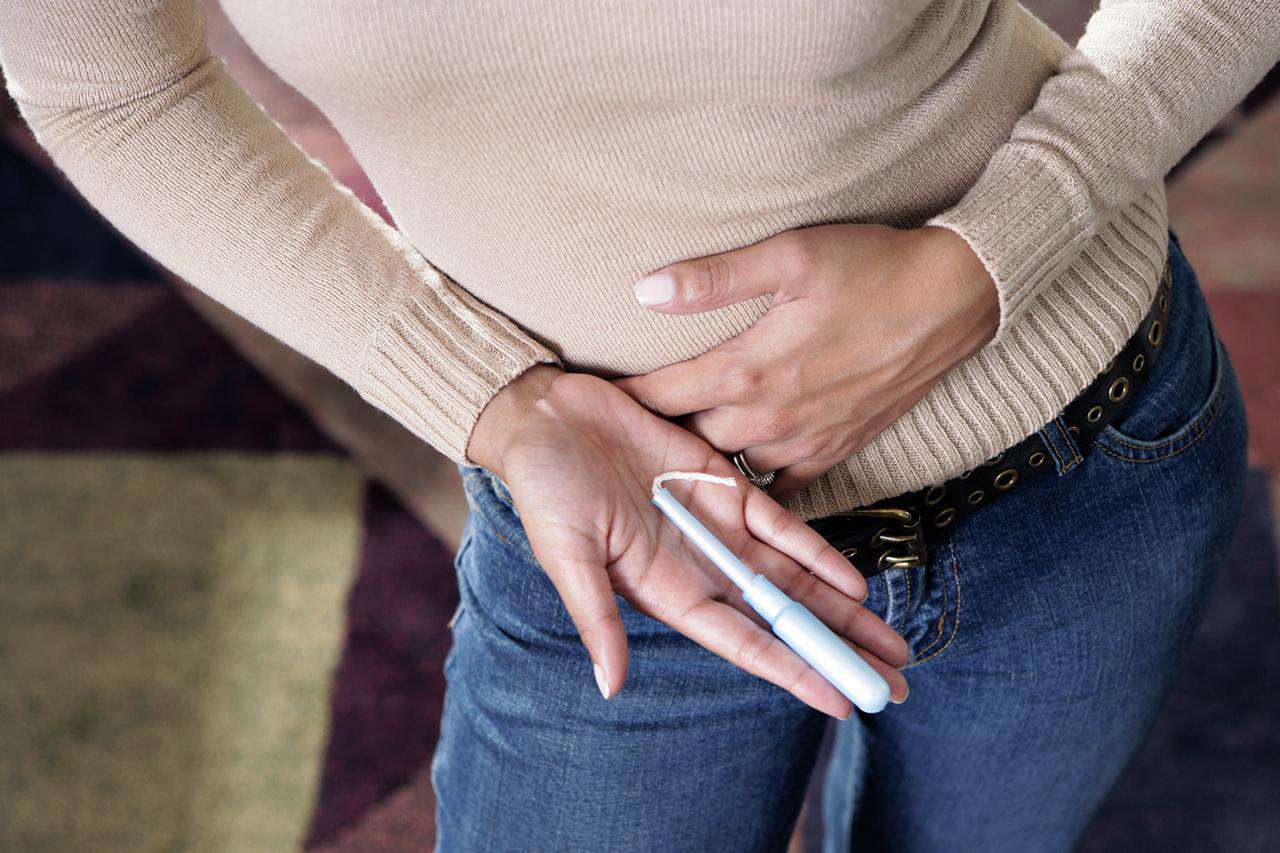Have you ever wondered what exactly is in the tampons you use during your period? It’s a question that many of us have, and for good reason. After all, these products come into direct contact with our bodies for hours at a time. So, do tampons have chemicals? The answer might surprise you.
Contents
Do Tampons Have Chemicals?

To answer this question, researchers have looked into the presence of harmful chemicals in tampons and their potential levels. They have also investigated whether these chemicals can leach out of the tampons and be absorbed into the body. Additionally, they have examined if any adverse health effects may arise from this absorption.
Surprisingly, a study conducted by the University of Notre Dame found that tampons themselves did not contain “forever chemicals.” However, these chemicals were discovered in the plastic wrappers and applicators as well as the liners and incontinence pads associated with tampons. This lack of safeguards raises concerns, as tampon manufacturers are not currently required to disclose a comprehensive list of ingredients.
It is worth noting that in the mid-1970s, tampons were categorized as medical devices under the Food, Drug, and Cosmetic Act. This meant that tampons had to undergo more extensive testing before being marketed to the public. However, unlike cosmetics, tampons were not mandated to disclose their chemical contents. This regulatory discrepancy persists today, as tampon manufacturers are not obligated to disclose ingredient lists, while other products like mascara and shampoo must list all ingredients on their labels.
It is important to mention that Procter & Gamble introduced a tampon called Rely in the 1970s, which could potentially stay inside a woman’s body for the entire duration of her menstrual bleeding. However, Rely contained carboxymethyl cellulose (CMC), a chemical that made the tampon hyper-absorbent. Although Japan banned the use of Rely due to its chemical ingredients, the US did not follow suit.
Tampons may indeed contain chemicals, although the precise levels and potential health effects remain uncertain. With minimal regulations regarding ingredient disclosure, it is crucial to advocate for more transparency within the industry.
Chemicals in Tampons
When it comes to the question of whether tampons contain chemicals, the answer is yes. Tampons are manufactured using various processes and materials that can introduce certain chemicals into the product. In this section, we will explore the manufacturing process of tampons and highlight some common chemicals found in them. We will also discuss the potential health risks associated with these chemicals.
The Manufacturing Process
The manufacturing process of tampons involves several steps, from sourcing materials to packaging the final product. Throughout this process, chemicals can be introduced at various stages. Here is a brief overview of the manufacturing process:
- Sourcing materials: Tampons are typically made from a blend of natural and synthetic fibers, such as cotton, rayon, and polyester. The sourcing and processing of these materials can involve the use of chemicals, such as pesticides and bleach.
- Tampon formation: The fibers are processed and compressed into the shape of a tampon. Additives and adhesives may be used during this process to help with shaping and cohesion.
- Fragrances and dyes: Some tampons may contain added fragrances or dyes to enhance their scent or appearance. These additives can introduce additional chemicals into the product.
- Packaging: Tampons are often individually wrapped in plastic or other materials. The packaging materials and adhesives used can also contribute to the presence of chemicals in tampons.
It’s important to note that tampon manufacturers are not currently required to disclose a list of ingredients, unlike other personal care products such as mascara and shampoo. This lack of transparency can make it difficult for consumers to fully understand the chemical composition of tampons.
Common Chemicals Found in Tampons
While the specific chemical composition of tampons can vary depending on the brand and manufacturing processes used, there are some common chemicals that have been found in tampons:
- Dioxin: Until the late 1990s, tampons were found to contain traces of dioxin, a chemical that can be harmful in high exposure and has been linked to cancer and immune system damage. Although dioxin levels in tampons have decreased over the years, small amounts may still be present due to residues in the environment.
- Phthalates and Bisphenol-A (BPA): Studies have found the presence of these endocrine-disrupting chemicals in tampons. Phthalates and BPA are known to interfere with hormonal balance and have been associated with various health issues.
- Pesticide residue: Previous testing of tampons and menstrual pads have found traces of pesticide residue, which can come from the sourcing and processing of cotton or other fibers used in tampons.
Potential Health Risks
The potential health risks associated with the chemicals found in tampons are a concern for many women. Exposure to these chemicals, even in small amounts, over a long period of time can have adverse effects on the body.
Some potential health risks associated with the chemicals in tampons include:
- Hormonal disruption: Chemicals such as phthalates and BPA have been linked to hormonal disruption, which can lead to issues with reproductive health, menstrual irregularities, and other endocrine-related disorders.
- Allergic reactions: Some women may experience allergic reactions to certain chemicals found in tampons, leading to itching, irritation, or other discomfort.
- Long-term health effects: The long-term effects of continuous exposure to these chemicals are still under investigation. Further research is needed to fully understand the potential health risks associated with using tampons containing these chemicals.
Tampons do contain chemicals, and some of these chemicals have been associated with potential health risks. With limited ingredient disclosure requirements, it can be challenging for consumers to fully understand the composition and potential risks of the tampons they use. As a result, there is a growing demand for more transparency and regulation within the tampon industry to ensure the safety of menstrual care products.
Choosing Safer Tampons

When it comes to taking care of your menstrual health, it’s important to choose tampons that are safer and free from harmful chemicals. Here are a few options that you can consider:
1. Organic Tampons
Opting for organic tampons is a great way to ensure that you’re using a product made with safer materials. Organic cotton tampons are made from cotton that is grown without the use of synthetic pesticides, herbicides, or genetically modified organisms (GMOs). This means that they are less likely to contain harmful chemicals that could potentially irritate your delicate vaginal area.
Organic tampons are not only better for your health, but they also have a positive impact on the environment. By supporting organic farming practices, you’re contributing to the reduction of pesticide use and promoting sustainable agriculture.
2. Chemical-Free Alternatives
If you’re looking for alternatives to traditional tampons, there are several chemical-free options available that can provide you with peace of mind. Here are a few alternatives to consider:
- Menstrual Cups: Silicone and natural rubber cups, like the DivaCup and the Keeper, are reusable and do not contain any harmful chemicals. They collect menstrual fluid rather than absorb it, reducing the risk of irritation and potential exposure to chemicals.
- Reusable Cloth Pads: Made from soft, absorbent cloth materials, reusable cloth pads are an eco-friendly and chemical-free option. They can be washed and reused, making them a cost-effective and sustainable choice.
- Period Underwear: Designed with built-in absorbent layers, period underwear offers a comfortable and leak-proof option without the need for additional products. Look for brands that are made from organic or chemical-free materials for added safety.
By choosing these chemical-free alternatives, you can minimize your exposure to potentially harmful substances and prioritize your health and well-being.
Remember, while conventional tampons may be fine to use occasionally, taking steps to choose safer options can make a significant difference in reducing your overall exposure to chemicals. Empower yourself by making informed decisions about the products you use during your menstrual cycle.
Frequently Asked Questions
What is safer than tampons?
Tampon alternatives like silicone menstrual cups and period underwear are generally safer than tampons. They are made from medical-grade materials, such as silicone or polymers, which can help prevent exposure to chemicals found in tampons and other feminine products.
Do tampons have harmful chemicals?
Yes, tampons may contain harmful chemicals. They can contain traces of dioxin from bleach, pesticide residues from non-organic cotton, and undisclosed “fragrance” ingredients.
Are tampons FDA approved?
Yes, tampons are regulated by the FDA as medical devices. However, it is important to note that tampons cleared by the FDA are intended for single use and should not be reused.
What tampons have no chemicals?
There are various tampon brands that offer chemical-free options. Some examples include Cora Organic Tampons, Tampon Tribe Non-Toxic Tampons, Rael Organic Tampons, August Non-Toxic Tampons, Natracare, Blume, Daye, and Sustain.
I am a medical student with experience and interest in Women’s health and well-being.